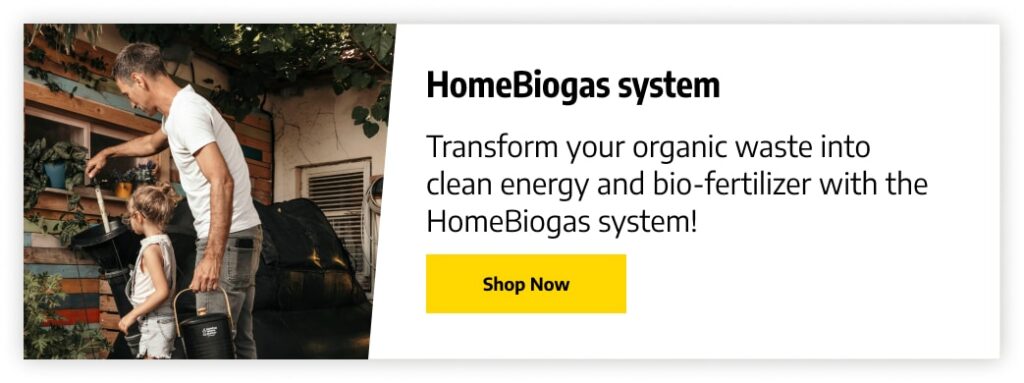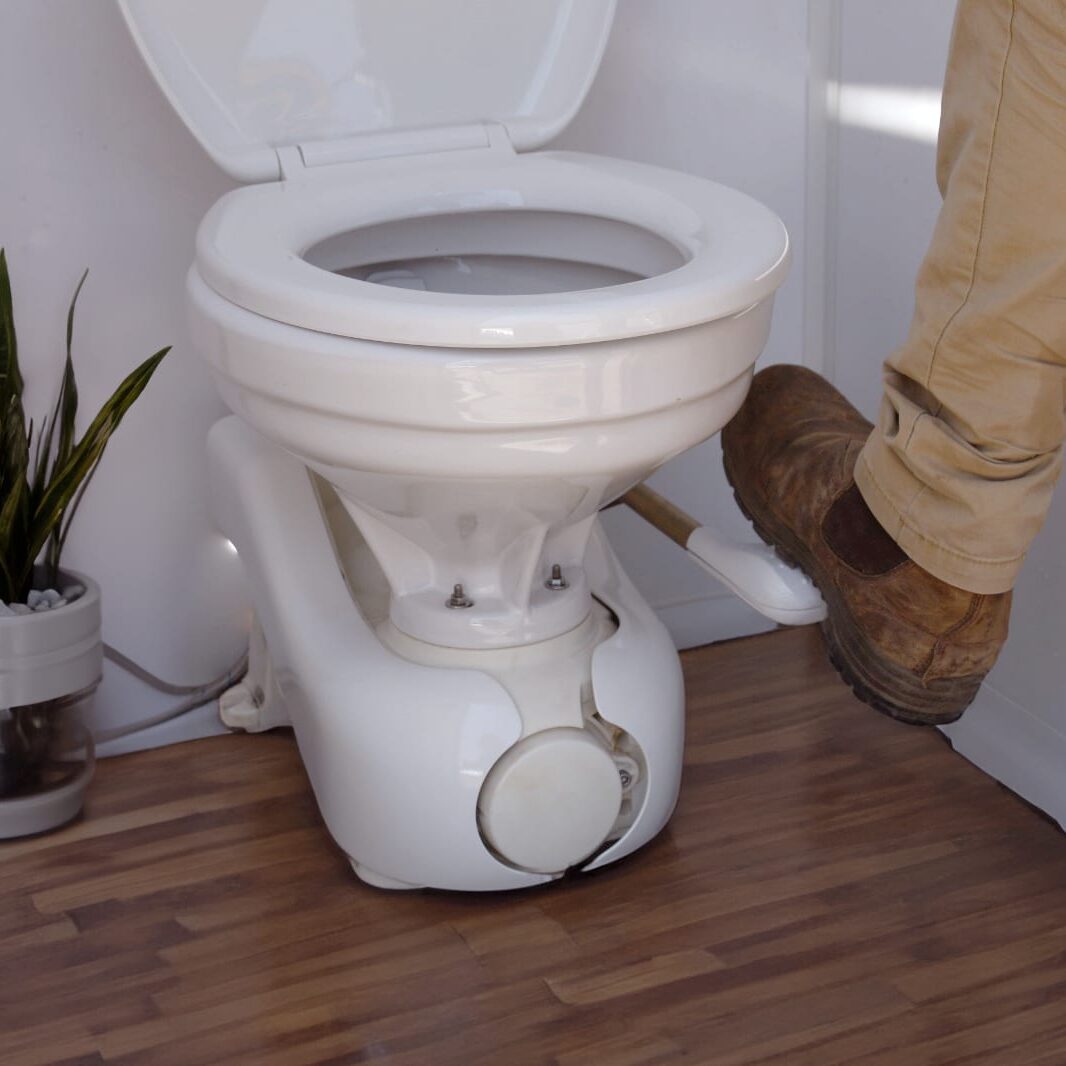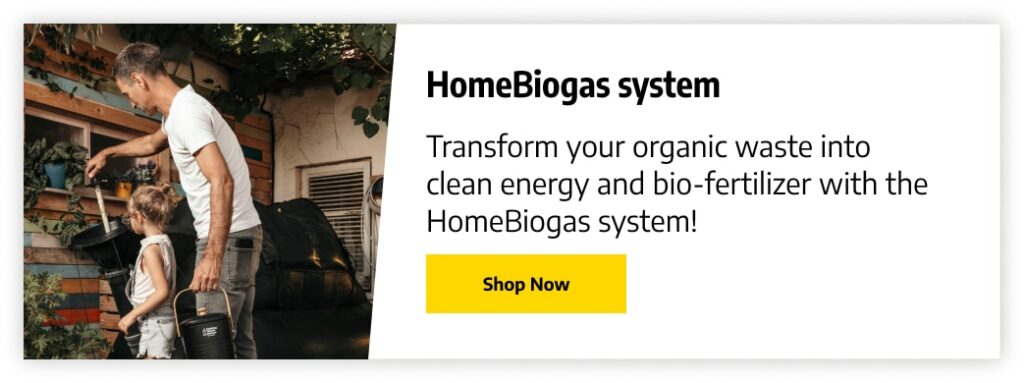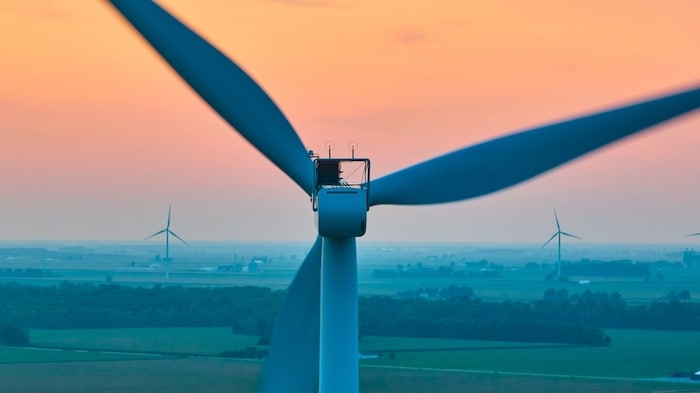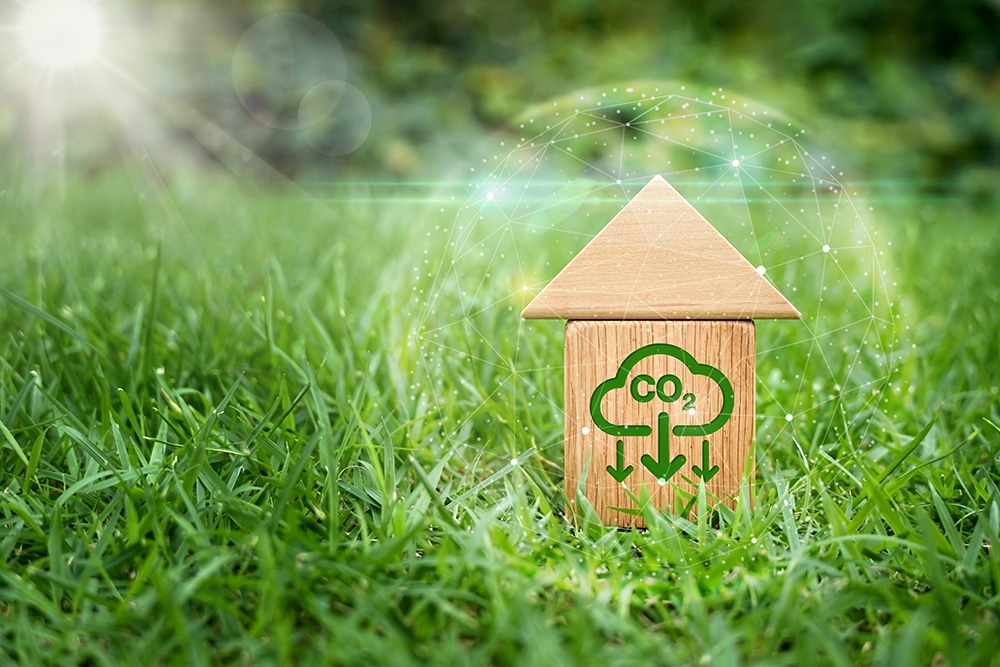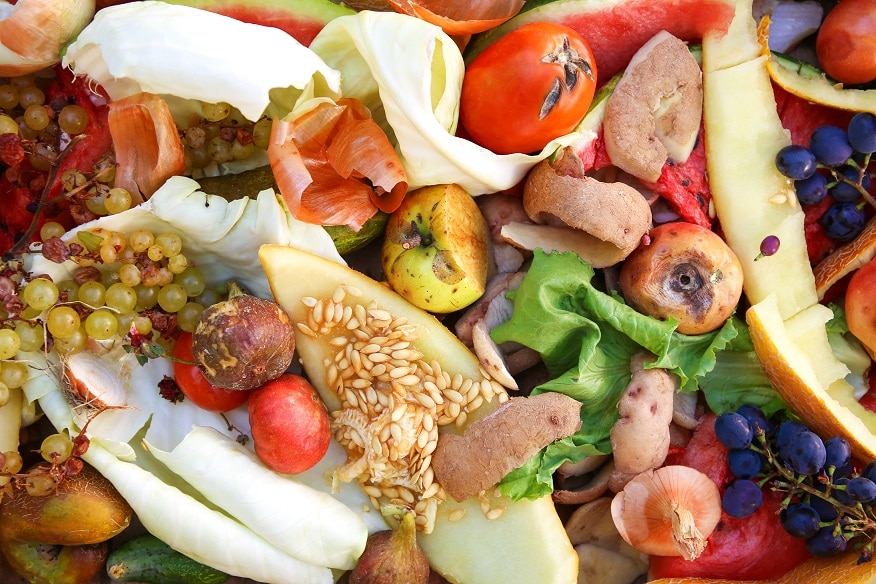
It’s a disaster waiting to happen, and sooner rather than later. The different types of wastes contain all kinds of harmful chemicals, antibiotics, nutrients and pathogens which can harm the surrounding area in any number of ways (for example, by getting into the source of drinking water, crops, or harming the surrounding wildlife).
Not only that, but one of the biggest issues with filling up our landfills is that it creates huge amounts of methane, a greenhouse gas. Methane traps heat in the atmosphere at a rate higher than carbon dioxide does (86x more), resulting in more rapidly escalating climate change.
It’s clear that something needs to be done. We need to –
- Reduce the wastes we personally contribute to landfills.
- Find other methods for what we’d usually rely on non-renewable sources of energy.
With creating biogas from food waste, both of these issues are solved in one go.
Biogas from Food Waste: How Does it Work?
Biogas is a type of natural gas. It’s created by breaking down the bacteria in organic waste (such as plant and animal products) in ‘anaerobic digestion’ – a digestive process in a purpose-built vessel, and an oxygen-free environment.
When creating biogas from food waste, the biogas is created by anaerobic digestion, recycling the organic material fed into the vessel which releases biogas.
But that’s not all: the biogas from the food waste process separates the energy created – the biogas itself – and any other solid run-off (‘digestate’), which can also be used for sustainable living.
This anaerobic digestion process can happen naturally in some landfills, natural environments and even livestock manure processing factories, but not at any significant, environment-changing level. For that, we need to look at making longer-lasting and higher-impacting changes.
One of these could be harnessing the power of the anaerobic digestion process to produce biogas from food waste. It’s an optimized, controlled process, and has the power to make a huge impact on your personal contribution to landfills, while cutting down the amount of food waste you produce, and even saving your energy bills!
The Biogas from Food Waste Process
If this sounds complicated, rest assured that it isn’t.
The actual creation of biogas from food waste takes place in purpose built ‘reactors’ (vessels). Once the food waste and organic waste scraps are added to the reactor, the bacteria inside the reactor works in stages to break down the waste, creating a chain of chemical reactions that end in biogas formation (as well as digestate runoff in liquid and solid form).
Sometimes, biogas from food waste can be produced quicker when different types of organic wastes are placed in the reactor together: this is called ‘co-digestion’.
Once the biogas is captured, it can be used for a whole range of sustainable living activities, including:
- Cooking
- Powering engines, turbines and other sustainable living tools
- Upgrading it to biomethane for use in a natural gas pipeline
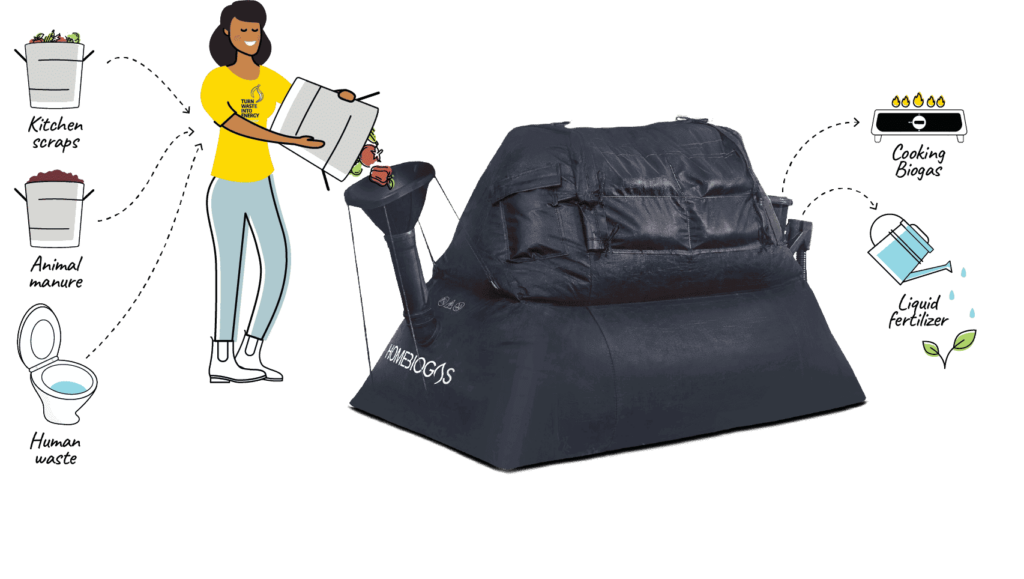
Who Uses Biogas from Food Waste?
Biogas from food waste has so many and-uses, you might wonder why you’re only just hearing more about it!
Among them include –
- Renewable natural gas, filled with biomethane, this biogas has been refined to meet natural gas industry standards. In fact, 40% of natural gas is used to provide the electricity powering the US national grid. Other natural gas is used for heating and cooking.
- Compressed natural gas and liquefied natural gas
- Digestate: liquid and solid run offs that are produced separate from the biogas during the anaerobic digestion process
As far as who actually uses biogas from food waste, the answer is: anyone who’s looking to source and live a renewable energy lifestyle.
This can be anyone from –
- Local and federal governments looking to replace their dependency on (costly, inefficient) energy sources
- Individual households seeking to live a more renewable energy-focused and sustainable lifestyle (such as clean energy advocates and homesteaders)
- Industries depending on using non-renewable energy sources
Curious to see if you too should be using biogas from food waste? If you’re eager to cut down on your reliance on fossil fuels and are interested in creating your own, locally produced, renewable energy, it could be you.
HomeBiogas products come in an assortment of sizes because the people who use our systems come from a variety of backgrounds and lifestyles.
The Clear-Cut Benefits of Using Biogas from Food Waste
If it all sounds a bit complicated, then rest assured that it’s anything but.
On that note, when it comes to the benefits of using biogas from food waste, you might be pleased to know that there are so many other benefits to doing so, all of which could really affect and improve your entire lifestyle!
Using biogas from food waste will impact your –
- Personal environmental impact, from cutting down your reliance on non-renewable sources of energy. Not only will you be generating a renewable energy source, but you’ll be less responsible for contributing to landfills.
- Your energy bills. Using biogas to cook, or even power your home, means a reduced energy bill. In fact, just one cook (powered by up to 6 liters of organic food waste) will give you enough natural energy for up to 2 hours.
- Saving the environment by using any methane (the harmful greenhouse gas that is released from landfills) for conversion to biogas, your carbon footprint and personal responsibility for atmospheric emissions decreases drastically.
- Agricultural intentions. The digestate produced by biogas from food waste can be used as fertilizer, to continue growing your own organic crops. You could even sell the natural fertilizer produced at a local farmers market, thereby creating a whole new revenue stream you might not have previously considered.
- Complete energy independence. And what better situation could you be in than that?
The above benefits are so easy to achieve. You just need the correct reactor…and you could be creating your own biogas from food waste in your very own backyard in just a matter of clicks!
The HomeBiogas Solution: Creating Biogas from Food Waste
The HomeBiogas reactor brings you the ability to create your own biogas from food waste to your own home.
Installing the reactor takes no time at all, and brings you an all-natural, environmentally-friendly way to cook your food and fertilize your garden.
It’s incredibly simple too: just collect up to 6 liters of food scraps (or other organic waste) and put it into the system. Turn the stove on, wait for the biogas to form, and cook your food!
It’s odor-less, hassle-free…and gives you all the benefits outlined above.
Delivered straight to your stove top in an instant, your biogas from food waste will bring you –
- Biogas for at-home cooking
- A reduced set of energy bills
- Reduced environmental impact
- High-quality liquid fertilizer, ready to use
You can feed the HomeBiogas system anything from fruit, dairy, eggs, meats, cooking oil and more that’s organic. The system itself is a one-time purchase that will last you up to 15 years before you need to replace it. Even better, it doesn’t require any cleaning (which makes it the best type of composter or stovetop you could ask for).
With the HomeBiogas system you’ll reduce your carbon footprint and reliance on fossil fuels while saving money on non-renewable energy. Take the next step toward living your most sustainable life and discover the HomeBiogas product which will serve you best!
